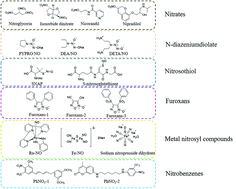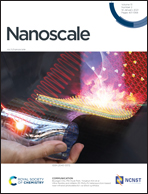Advanced nitric oxide donors: chemical structure of NO drugs, NO nanomedicines and biomedical applications
Abstract
Nitric oxide (NO), as an endogenous diatomic molecule, plays a key regulatory role in many physiological and pathological processes. This diatomic free radical has been shown to affect different physiological and cellular functions and participates in many regulatory functions ranging from changing the cardiovascular system to regulating neuronal functions. Thus, NO gas therapy as an emerging and promising treatment method has attracted increasing attention in the treatment of various pathological diseases. As is known, the physiological and pathological regulation of NO depends mainly on its location, exposure time and released dosage. However, NO gas lacks effective accumulation and controlled long-term gas releasing capacity at specific sites, resulting in limited therapeutic efficacy and potential side effects. Thus, researchers have developed various NO donors, but eventually found that it is still difficult to control the long-term release of NO. Inspired by the self-assembly properties of nanomaterials, researchers have realized that nanomaterials can be used to support NO donors to form nanomedicine to achieve spatial and temporal controlled release of NO. In this review, according to the history of the medicinal development of NO, we first summarize the chemical design of NO donors, NO prodrugs, and NO-conjugated drugs. Then, NO nanomedicines formed by various nanomaterials and NO donors depending on nanotechnology are highlighted. Finally, the biomedical applications of NO nanomedicine with optimized properties are summarized.

- This article is part of the themed collections: Top articles from NCNST, Recent Review Articles and Nanoscale 2021 Emerging Investigators


 Please wait while we load your content...
Please wait while we load your content...